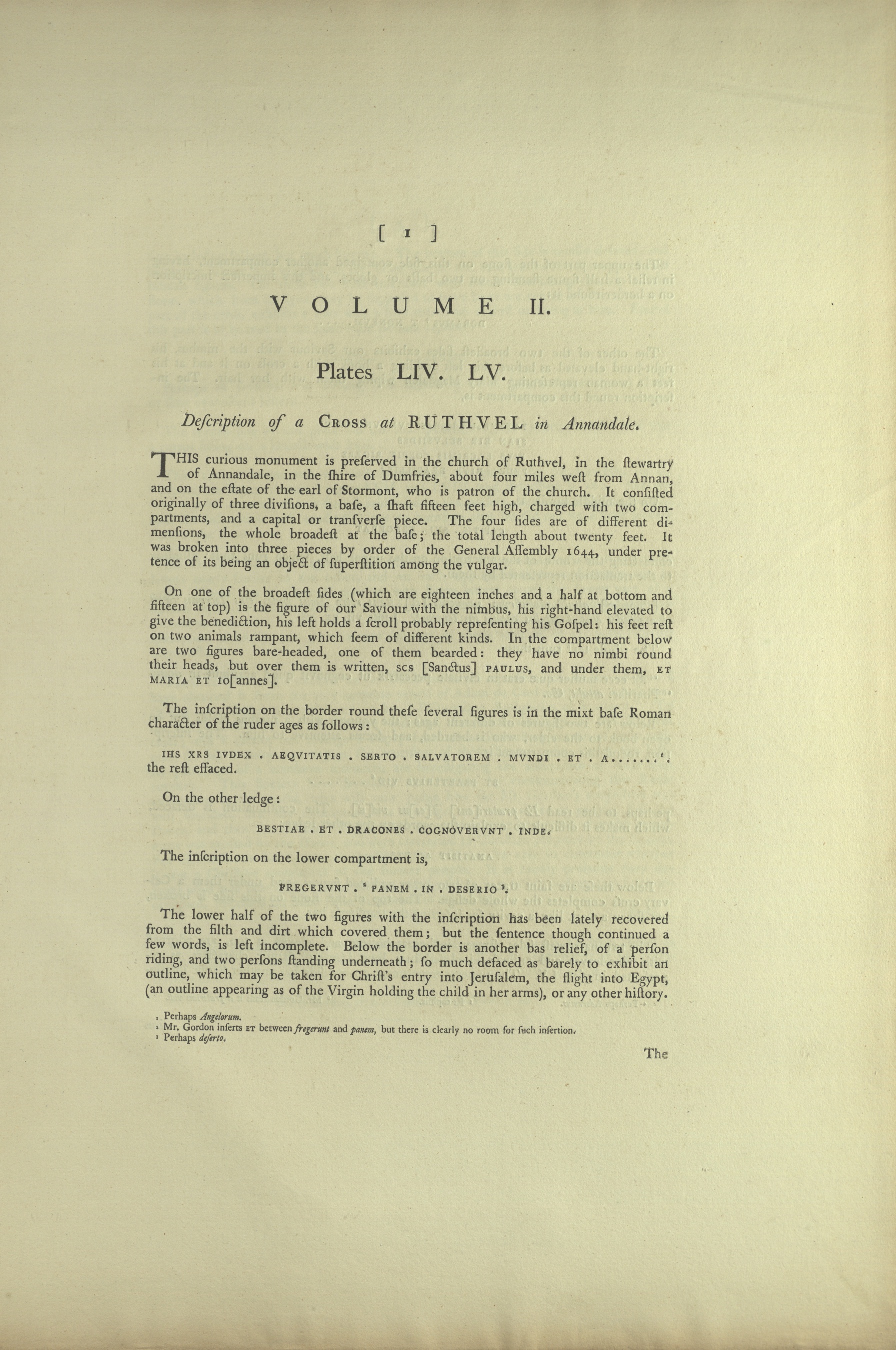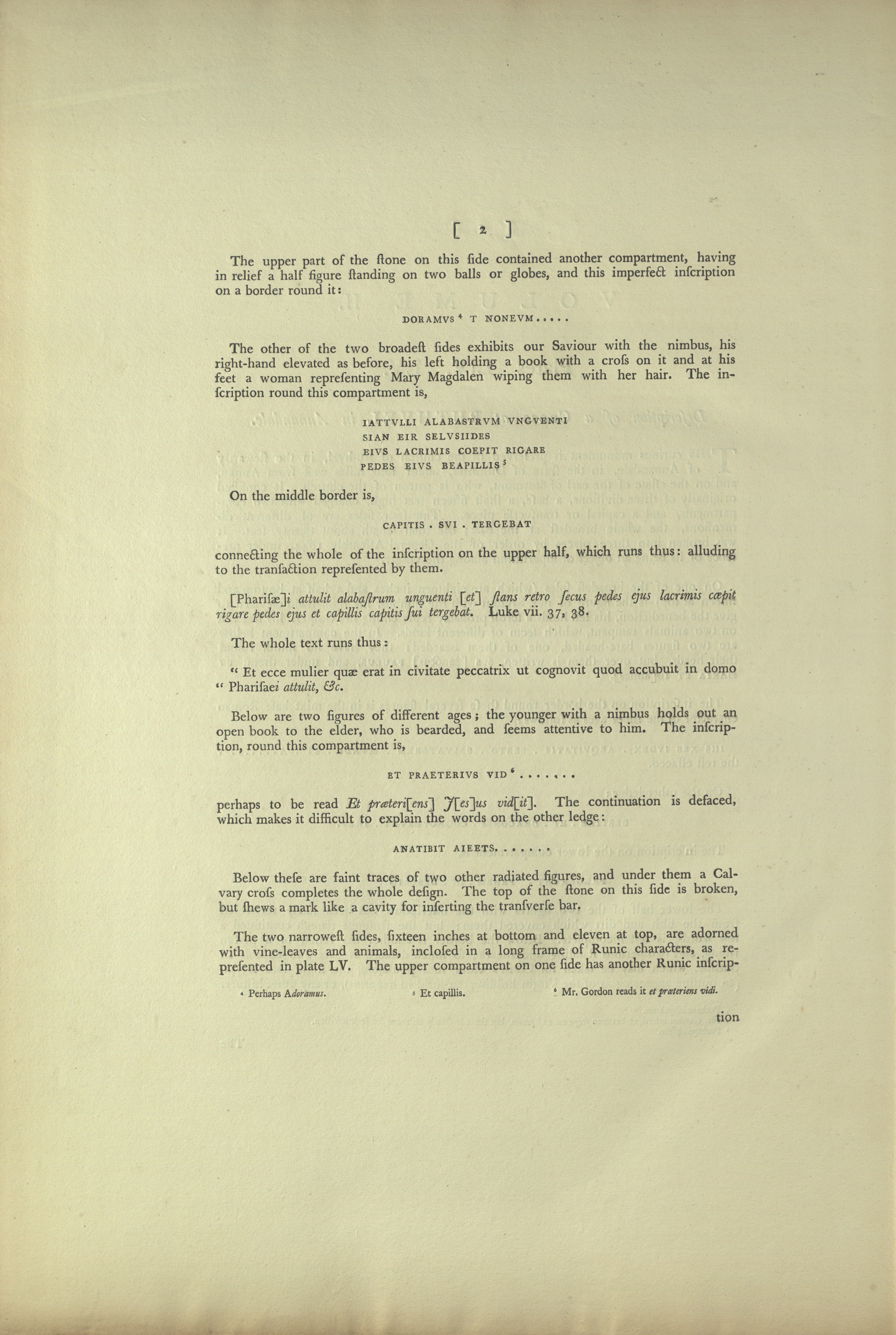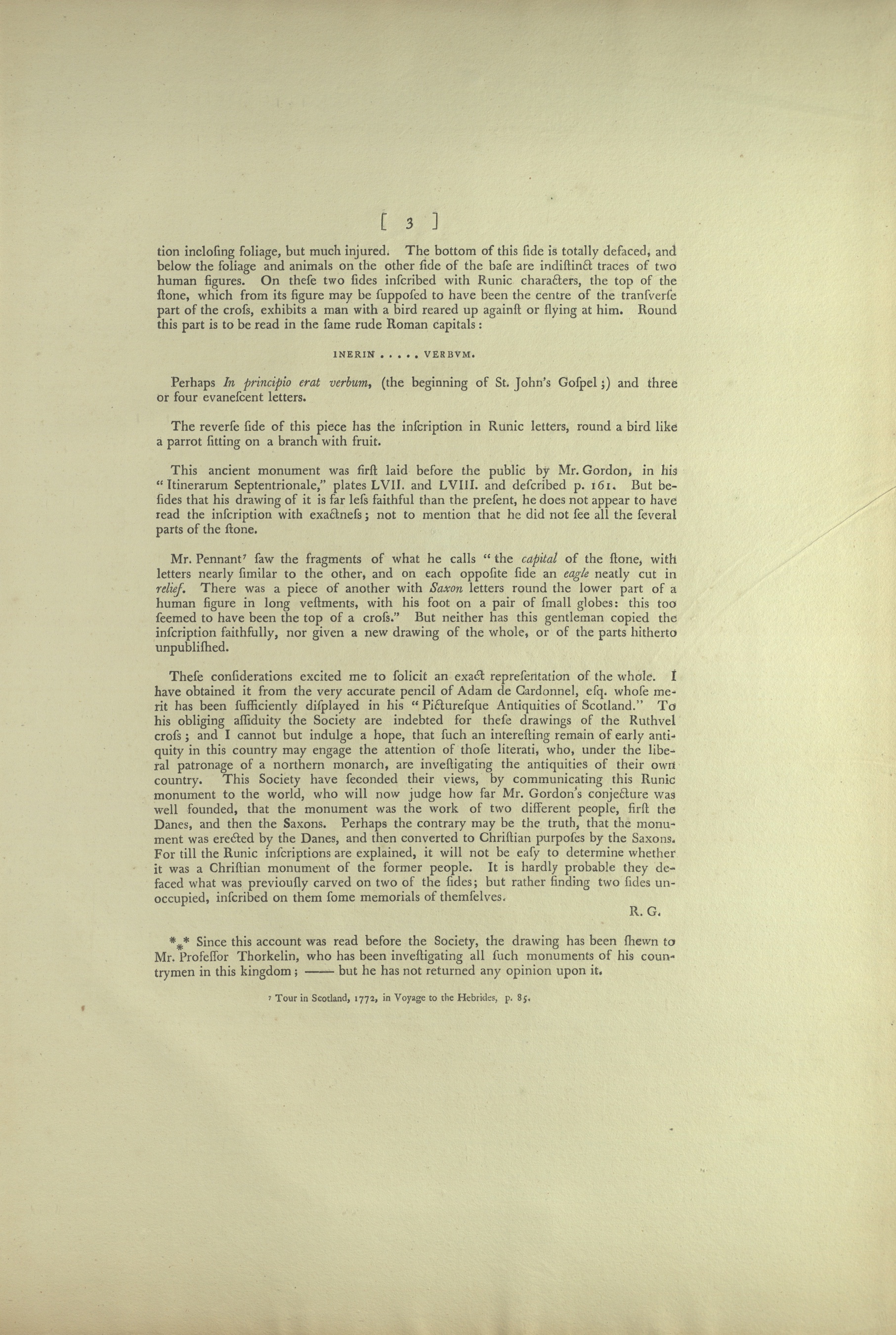Plates 2.54-2.55: Ruthwell Cross (Original Explanatory Account)

Translations by Johanna Kramer
[(Page) 1]
VOLUME II.
Plates LIV. LV.
Description of a CROSS at RUTHVEL in Annandale.
THIS curious monument is preserved in the church of Ruthvel, in the stewartry of Annandale, in the shire of Dumfries, about four miles west from Annan, and on the estate of the earl of Stormont, who is patron of the church.
Read more/less...
[ (Page) 2 ]
The upper part of the stone on this side contained another compartment, having in relief a half figure standing on two balls or globes, and this imperfect inscription on a border round it:
DORAMVS4 T NONEVM . . . . . {nonsensical}
The other of the two broadest sides exhibits our Saviour with the nimbus, his right-hand elevated as before, his left holding a book with a cross on it and at his feet a woman representing Mary Magdalen wiping them with her hair. The inscription round this compartment is,
Read more/less...
[ (Page) 3 ]
{inscrip-}tion inclosing foliage, but much injured. The bottom of this side is totally defaced, and below the foliage and animals on the other side of the base are indistinct traces of two human figures. On these two sides inscribed with Runic characters, the top of the stone, which from its figure may be supposed to have been the centre of the transverse part of the cross, exhibits a man with a bird reared up against or flying at him. Round this part is to be read in the same rude Roman capitals:
INERIN . . . . . VERBVM.
Read more/less...